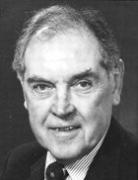|
|
||||||||||||||||||||||||
 |
Featured person
Recently added |
William Babington (1756 - 1833): |
||||||||||||||||||||||
Babington was born on 21 May 1756 in Portglenone, Co. Antrim, second son of Rev. Humphrey Babington, curate of Ahoghill, Co. Antrim, and Dorothea (née Battle or Buttle). He was apprenticed to a doctor in Londonderry and completed his medical studies at Guy’s Hospital, London. He qualified for the Naval Medical Service and in 1777 was warranted as an assistant to the two surgeons at Haslar Naval Hospital, Portsmouth (founded in 1754 and which had accommodation for 2,000 patients, second only to the Naval Hospital at Greenwich) where he caught “gaol fever”. He resigned the service in 1781 and become a successful apothecary and a lecturer in chemistry at Guy’s Hospital. He built on his success by appointment as physician at the hospital after gaining an MD from the University of Aberdeen (1795) and the Licence of the Royal College of Physicians of London (1796). Highly respected, courteous and popular he built up a large, fashionable and lucrative practice so successfully that he resigned from Guy’s in 1811 “because his private engagements [on which his income depended; Guy’s was a charitable institution] had become so numerous”.
Despite his success as a physician his chief interests were in mineralogy and associated sciences rather than in medicine per se. As well as his Sylabus of the Course of Chemical Lectures at Guy’s Hospital, written with James Curry and published in 1789, he published A Systematic Arrangement of Minerals founded on the joint Consideration of their chemical, physical and external Characters (1795) and A New System of Mineralogy in the Form of a Catalogue (1799), and left four volumes of MS papers in King’s College (London) Library. His ideas were eventually superseded and his more lasting importance to the subject was his leading role in founding the Geological Society of London in 1807 following informal early-morning meetings which he organised at his house in Aldermanbury in London. He gifted specimens to its museum, books to its library and contributed to its Transactions and in every way influenced its development and was voted its president in 1822. He also helped to found the Hunterian Society in 1816 which was devoted to medical subjects. Honours flowed: Fellowship of the Royal Society (1805), of the Royal Society of Medicine (1817), of the Royal College of Physicians of London “by special grace” (speciali gratia) in 1827, and MD (hon. causa) of the University of Dublin (1831) partly to recognise his assistance in the preparation of the Pharmacopoeia Dublinensis of 1805.
Babington died on 29 April 1833 at his home in Devonshire Street, London and was buried at St. Mary’s, Aldermanbury in London. A colleague wrote “[he] was probably as nearly without fault as is consistent with human nature”. He married Martha Elizabeth Hough on 21 July 1787 by whom he had five daughters and eight sons, two of the latter being doctors one of whom, Benjamin Guy Babington (1794-1866), MD (Cantab., 1830), FRS, was credited with being the inventor of the laryngoscope and was an accomplished linguist and translator, while a daughter, Martha, married Richard Bright, MD (Edinb., 1813), former pupil of Babington, who is eponymously recognised to-day in Bright’s disease of the kidney which he described in 1827.
There is a memorial by Behnes (1837) in St. Paul’s Cathedral and a bust also by Behnes (1839) in the Royal College of Physicians of London.
| Born: | 21 May 1756 |
| Died: | 29 April 1833 |
| Peter Froggatt |
| Bibliography: Clarke, R.S.J. A Directory of Ulster Doctors (who qualified before 1901. Belfast: Ulster Historical Foundation, 2013; Dictionary of Irish Biography, 2009; Oxford Dictionary of National Biography, 2004; Martin, E.A. A Dictionary of Bookplates of Irish Medical Doctors (with short bibliographies). Dublin: de Búrca, 2003 |


Home | Our Policies | Plaques | Browse | Search | Sponsors | Links | Help | Contact
Privacy & Disclaimer | Cookie Policy | Site Map | Website Design By K-Point
© 2024 Ulster History Circle









